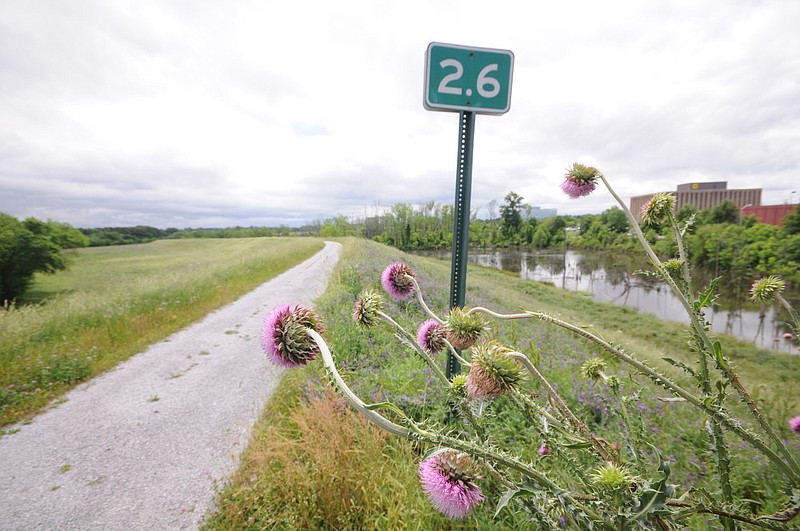Fifty years ago today, Chattanoogans were drying out from what has since been described as a 100-year flood.
The St. Patrick's Day flood saw the Tennessee River climb to seven feet above flood stage and the South Chickamauga Creek rise to more than 12 feet above flood stage. The Chattanooga Metropolitan Airport (then Lovell Field) was closed (and runways underwater), and the then-vibrant Eastgate Mall and Brainerd Village shopping centers were inundated.
Damage estimates from the city's second worst flood grew through the years from $10 million to $20 million to $40 million before finally settling at around $67 million.
Current residents who didn't live here then or who weren't alive probably can't imagine the devastation wrought at the time on the North Brainerd and East Ridge areas.
As bad as it was, it might have been much worse without the Tennessee Valley Authority's system of dams and the subsequent Brainerd Levee built with the help of federal money through TVA and city dollars.
A 1990 computation suggested that without TVA the Tennessee River at Chattanooga during the 1973 event would have reached an additional 15 feet above flood stage.
The system of dams also was credited with preventing $25 million in damage in Chattanooga from a February 1990 flood and $430 million in damage here from a May 2003 flood.
Flood control, along with agricultural and industrial development, was a primary reason the public utility was created by the Tennessee Valley Authority Act in 1933.
While we believe most development is better handled in the private sector, we have no qualms in saying TVA has made life much better for citizens of the Tennessee Valley.
The levee that was built to the west of South Chickamauga Creek after the 1973 flood is one example. Constructed for $17.3 million ($14.3 million federal, $3 million city) between October 1976 and January 1981, the 3.8-mile berm -- from 23 to 28 feet above the creek -- and an accompanying pumping station were said in a 2003 Times Free Press article to protect 1,230 acres, 1,500 homes and more than 150 businesses.
U.S. Rep. Marilyn Lloyd, who represented the area in Congress at the time the project was started, recalled in 2003 that her family was among those whose homes were damaged from the flood.
"I was very proud to help get the money for that project (which also included widening the creek and relocating parts of North Moore Road), which has more than paid for itself during several floods," she said.
Then-City Councilman and later Chattanooga Mayor Ron Littlefield, according to newspaper archives, reflected in 1990 that he'd helped develop plans for the levee while working with the Chattanooga-Hamilton County Regional Planning Commission.
"It was a pleasure to see its serve its purpose so well," he said.
Lloyd's successor in Congress, U.S. Rep. Zach Wamp, reminded area residents in a 1995 column in the Chattanooga Free Press why he fought hard for money for TVA. At the time, some House members wanted to eliminate $103 million in non-power funding for TVA, money that -- among other things -- funded the utility's efforts in preventing future floods.
"Make no mistake about it," he wrote. "The projects we fought for are not pork. The TVA monies go for such things as flood control. TVA estimates that in 1994 alone its flood control system prevented $1 billion in flood damage across the valley and saved Chattanooga from two major floods. And no one who remembers the devastating St. Patrick's Day 1973 flood in Chattanooga thinks flood control is pork."
The levee -- later given to the city -- wasn't the only result of the flood, now 50 years in the rear-view mirror.
Unregulated development in the flood plains of local creeks and the river continued for a time after the flood, but the city eventually adopted a set of federal flood insurance regulations. Those regulations, at the time, said structures built in a flood plain had to be at least one foot above the 100-year flood level.
And then there was one more upside to the rain that brought the 1973 flood, its subsequent runoff and all future floods. In 1984, following a minor flood, a TVA spokesman noted that the flood waters allow the utility to generate electricity with relatively low-cost hydroelectric power.
A 100-year flood, now 50 years and a few days ago, may lead one to believe we're now closer to another such event than we are away from the last one. But experts say that's not the proper way to look at it.
A 100-year flood is not one that comes every century, they say, but a flood that has a 1% chance of happening every year.
And if that does happen, according to another expert who commented in newspaper archives, TVA's presence won't reduce the likelihood of flooding but will reduce the amount of damage. For that, Tennessee Valley residents can be grateful.
